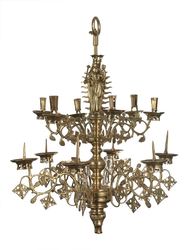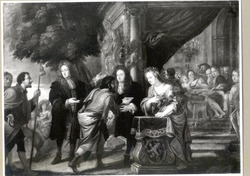History

STAM’s collection history is traced in a beautifully illustrated book compiled by STAM staff member Wout De Vuyst, written by author Patrick De Rynck and designed by STAM house-style designers Dooreman & Dams. It will be published by Snoeck Publishers in the autumn of 2016. After more than 180 years of collecting, there are many stories behind the objects and they are just waiting to be told.
Origin

Like most museum collections, STAM’s collection originated in the early nineteenth century, when antiquarians were on the lookout for anything of significance relating to the country’s regional and national past.
In 1833 the members of Ghent’s Monuments and Cityscapes Committee founded the museum of antiquities, the ‘Musée historique belge’. It reflected the romantic and patriotic vision of those years when there was a high level of interest in local and national history. The collection items were gifted by the members of the Committee.
Growth
In a relatively short space of time, the museum acquired a heterogeneous collection, thanks to modest contributions from benefactors. The year 1848 was an important milestone for the collection, for that was when Ghent city council donated several significant objects from the municipal patrimony. In 1884 the museum became a municipal institution and its first curator was appointed.
From strength to strength
In the nineteenth century, noteworthy pieces relating to Ghent’s trade guilds and objects from daily life were acquired at auctions of reputable Ghent art collections. In building the collection during the nineteenth and twentieth centuries, great attention was paid to items typifying Ghent and its history. The collection was developed by relinquishing, exchanging and lending objects to other institutions and museums in Ghent, and as a result of careful purchases, gifts, legacies and the introduction of permanent loans.
In the twentieth century the fame of the collection prompted gifts and legacies from Ghent’s bourgeoisie. The collection has since boasted an impressive array of weapons, objects relating to freemasonry and Chinese art. Furthermore, Ghent’s military guilds loaned some of their extraordinary art treasures on a permanent basis.
Over the years the collection has had a succession of different homes: from the Jesuits’ monastery in Voldersstraat it went to the Town Hall (1838), and from there to Baudelo Abbey on Ottogracht (1874) and then on to the Church of the Calced Carmelites in Langesteenstraat (1884). Eventually suitable accommodation was found for the collection in the magnificent buildings of Bijloke Abbey (1928).
Today
The Bijloke Museum closed on September 11th 2005. STAM – Ghent city museum opened on October 9th 2010. After more than 180 years of collecting, selecting, reorientation and exchanges between municipal museums, the STAM collection – previously the Bijloke collection – is now an important one in which all the art disciplines are represented.










